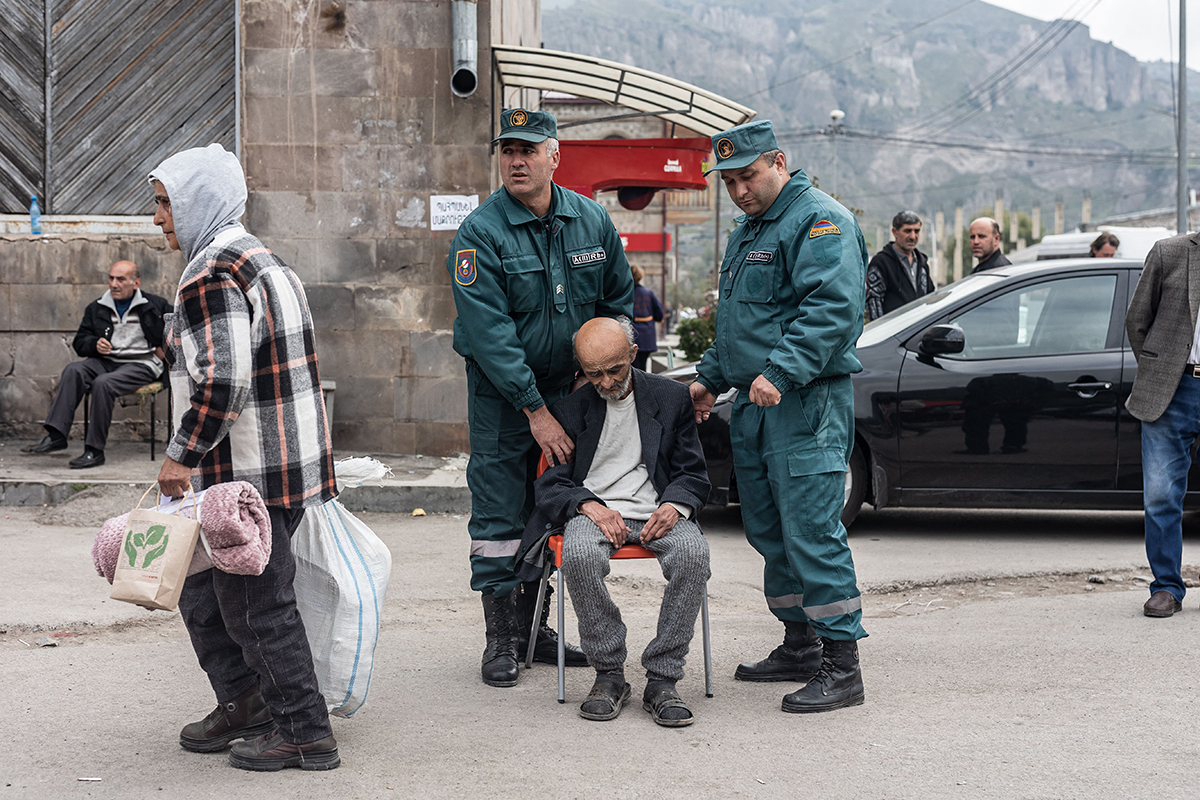Published on September 15, 2024, 12:43 am

Image source: Fox News
- Array
In recent times, there are reports asserting that Armenia and Azerbaijan are nearing the brink of signing a peace treaty that would conclusively end their longstanding dispute over the contested territory of Nagorno-Karabakh (Artsakh). While prospects of peace in the South Caucasus region is a welcome development, it is crucial for Armenia to stipulate an end to Azerbaijan’s continuous cultural eradication of Armenian places of worship such as churches and monasteries, khachkars (cross-stone monuments), among other religious sites that have been part of the region’s history for thousands of years, as a requisite for any peace agreement.
Emerging from the ethnic cleansing initiated by Azerbaijan which resulted in more than 120,000 Armenians being expelled from their ancestral homeland, Artsakh stands threatened with complete obliteration today. Recent reports indicate that about 400 Armenian churches and religious sites are prone to desecration or even destruction.
Identifying as the first country to adopt Christianity in 301 AD, Armenia’s identity and culture are largely embedded in its Christian faith. This makes these historical symbols paramount for its survival as a nation. Christianity has fortified Armenians throughout their bitter historical existence characterized by rampant persecution and mass suffering spanning hundreds of years- an instance readily evident with the first genocide of the twentieth century when over 1.5 million Armenians lost their lives systematically at the hands of Ottoman Turks- an event both Turkey and Azerbaijan vehemently deny till date.
Preservation of these religious havens ought to be established as a prerequisite for lasting peace between both countries. Marker respect towards these sacred spots will indeed serve as a true indication on behalf of Azerbaijan depicting its willingness for peaceful coexistence with Armenia. Yet, emerging signs depict otherwise.
Azerbaijan’s current head Ilham Aliyev following suit from authoritarian regimes used reconstructed history as a pretense to exact war on Armenians residing within Artsakh during 2020. He asserted that substantial regions of Armenia’s territory were in actuality, incremental ancestry lands belonging to Azerbaijan. This premise led him onto the path of a much-criticized campaign to revert Armenian churches and religious sites back to their “original” form, intended for destruction and eradication.
Under the cloak of restoration, Azerbaijan demolished the acclaimed Ghazanchetsots Cathedral at Shushi post capturing city control. This cathedral served as evidence of Armenian presence within this region. Adding insult to injury, Azeri forces began destructing an Armenian genocide monument in addition to razed Armenian religious and cultural sites as showcased through recent satellite images- including the St. John The Baptist Church dating 177 years back at Sushi – coupled with razing an entire village of Karintak showing plans for a new mosque construction.
Despite mounting pieces of evidence suggesting a cultural genocide unfolding, Azerbaijan continues evading accountability for defacing these sacred structures. Notably ignoring orders from the International Court Of Justice (ICJ) issued in November that demanded Azerbaijan monitor and reprimand acts involving desecration against Armenian heritage landmarks such as places of worship, monuments, landmarks amongst others.
Ahead of time during summer ’19 – prior to launch of Artsakh warfare Armenians utilized resources offered by TUMO Center for Creative Technologies giving rise to a 3D scanning project lead by students aiming at digitally preserving Dadivank Monastery signed between 9th & 13th centuries – one of Armenia’s most critical historical sights. This endeavor turned into a preservation campaign due to territorial shifts with areas falling under Azerbaijani dominion.
Each country needs tangible proof beyond digital records that reflect its religious history hence maintaining intact nationwide religious and cultural institutions become crucial in this case. Hostile stance manifested by Azerbaijan towards these signifies more than geographical question or sovereignty issue. It’s transnational persecution based on religion which needs immediate cessation
Given such circumstances, it becomes challenging to trust Azerbaijan’s declaration for peace with Armenia while concurrently aiming at erasing Armenian religious and cultural identity. As a nation professing religious tolerance and coexistence, Azerbaijan needs to expedite its pace in this journey particularly commencing with preserving Armenian religious and authentic sites as part of Artsakh. Falling short of this needs to serve as a barrier for any long-term peace prospects.
Original article posted by Fox News

Be the first to comment on "“Preservation of Armenian Heritage: A Prerequisite for a Lasting Peace Treaty between Armenia and Azerbaijan”"